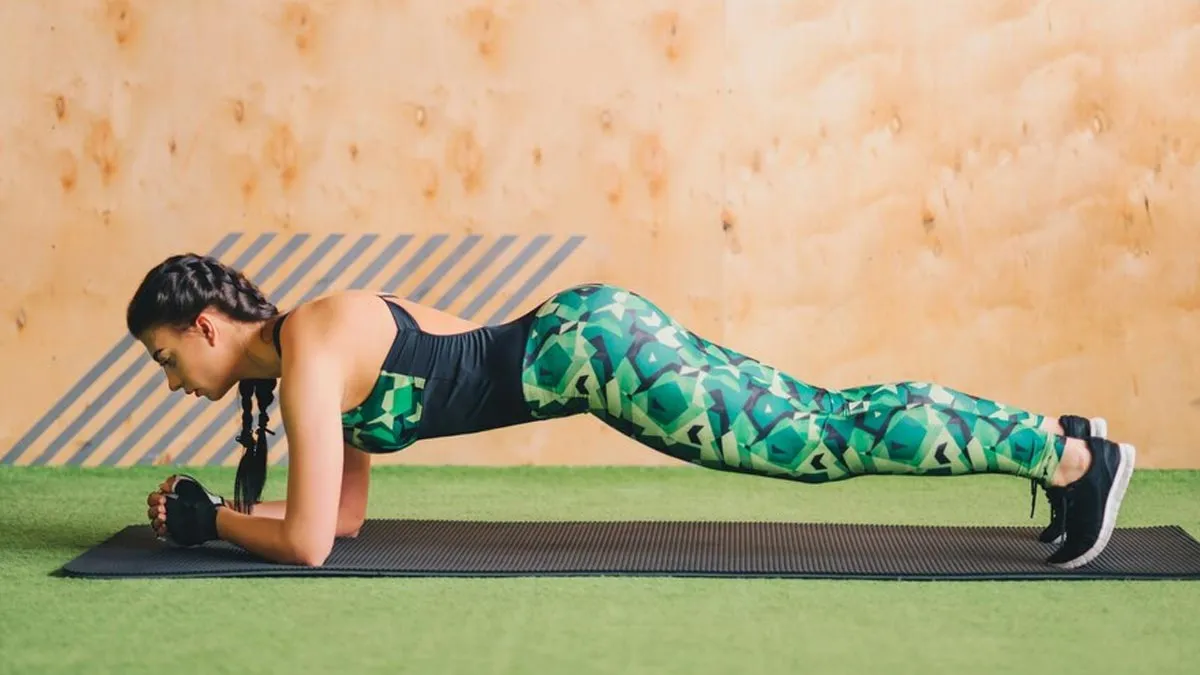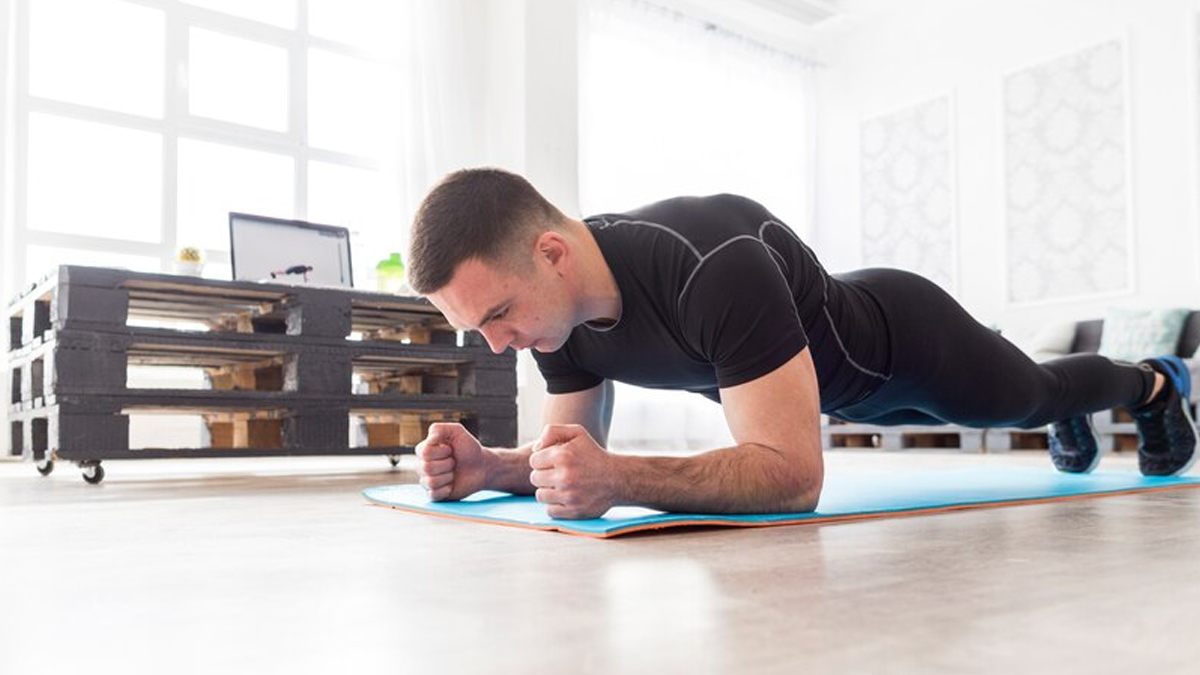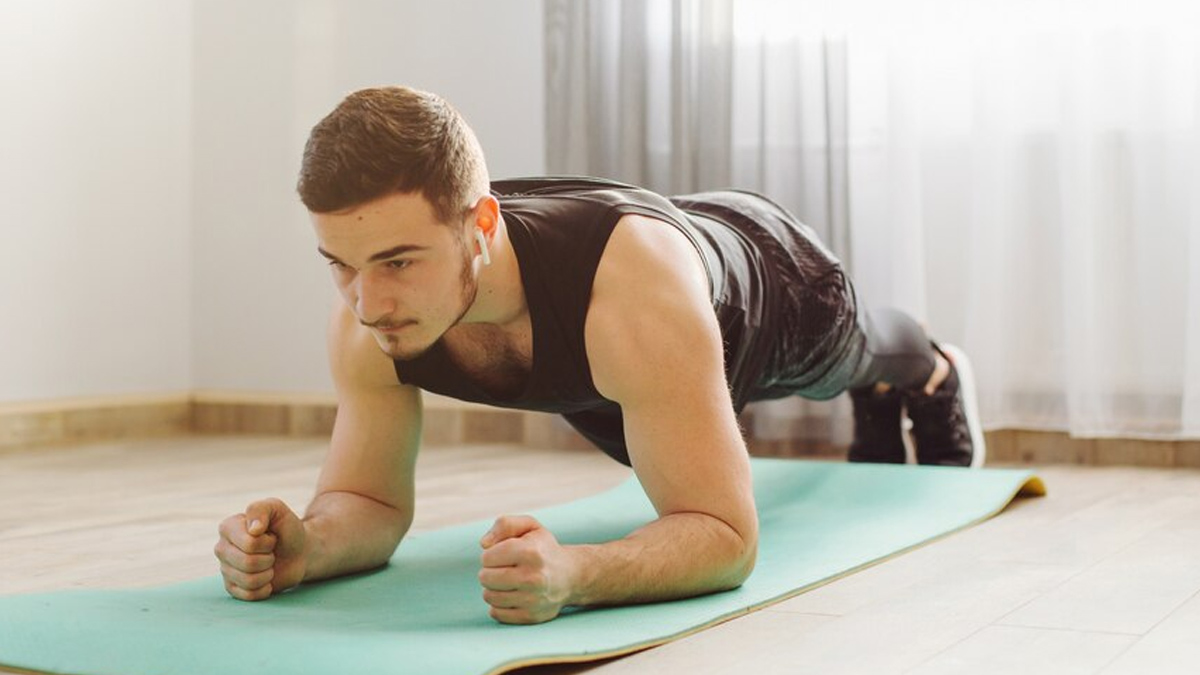
Planks are one of the most effective full-body exercises that target multiple muscle groups, improve core strength, and enhance overall fitness. Unlike crunches or sit-ups, planks engage the core without straining the spine. In an exclusive interaction with the editorial team of Onlymyhealth, our expert, Kapil Dave, Director of Sports, Sharda University - Noida, helped us explore different types of planks and their unique benefits. Here is everything he shared with us and why you should incorporate them into your fitness routine.
Table of Content:-
1. Basic Forearm Plank
How to Do It:
Start in a forearm position with elbows aligned under the shoulders.
Keep the body in a straight line from head to heels.
Engage the core and hold the position.
Benefits:
Strengthens the core, shoulders, and back.
Improves posture and stability.
Enhances endurance and balance.
Also Read: Athiya Shetty and KL Rahul Welcome Baby Girl: 5 Must-Know Health Tips for New Parents

2. High Plank
How to Do It:
Begin in a push-up position with hands directly under the shoulders.
Keep the body straight and engage the core.
Maintain a neutral neck position.
Benefits:
Builds upper body strength, especially in the shoulders and arms.
Engages the core, legs, and glutes.
Improves overall functional fitness.
3. Side Plank
How to Do It:
Lie on your side and place one elbow under the shoulder.
Stack your feet and lift your hips, keeping your body in a straight line.
Hold the position, then switch sides.
Benefits:
Strengthens the obliques and improves lateral stability.
Enhances core endurance and reduces lower back pain.
Helps with balance and coordination.
Also Read: Can High Cortisol Increase The Risk Of Glaucoma Here's What You Should Know

4. Reverse Plank
How to Do It:
Sit with your legs extended and place your hands behind you, fingers pointing forward.
Lift the hips while keeping the body straight from head to heels.
Hold the position while engaging the core and glutes.
Benefits:
Strengthens the back, glutes, and hamstrings.
Opens up the chest and shoulders, improving posture.
Reduces the risk of back pain.
5. Plank with Shoulder Taps
How to Do It:
Start in a high plank position.
Lift one hand and tap the opposite shoulder while keeping the core engaged.
Alternate sides while maintaining stability.
Benefits:
Enhances core stability and anti-rotational strength.
Improves coordination and balance.
Engages the arms and shoulders.
6. Plank to Push-Up
How to Do It:
Start in a forearm plank position.
Push up onto one hand, then the other, into a high plank.
Lower back down to the forearms and repeat.
Benefits:
Builds upper body strength.
Increases endurance and cardiovascular fitness.
Strengthens the core and improves mobility.
Bottomline
Different plank variations in your workout routine can maximise your core strength, improve stability, and enhance overall fitness. Planks offer a versatile and effective way to build strength and endurance, whether you're a beginner or an advanced athlete. Start with the basics and gradually progress to more challenging variations to keep your workouts engaging and beneficial.
Also watch this video
How we keep this article up to date:
We work with experts and keep a close eye on the latest in health and wellness. Whenever there is a new research or helpful information, we update our articles with accurate and useful advice.
Current Version